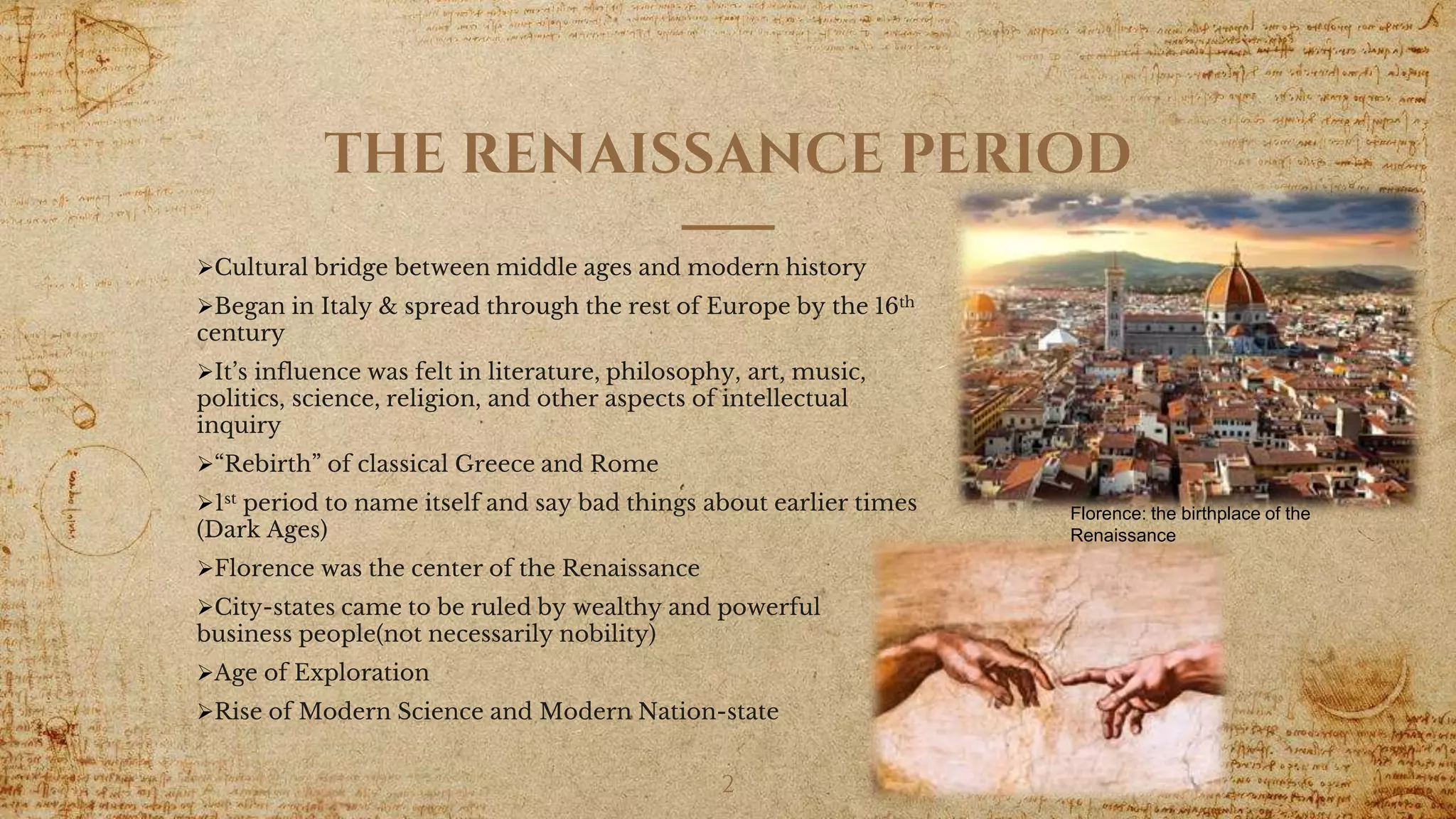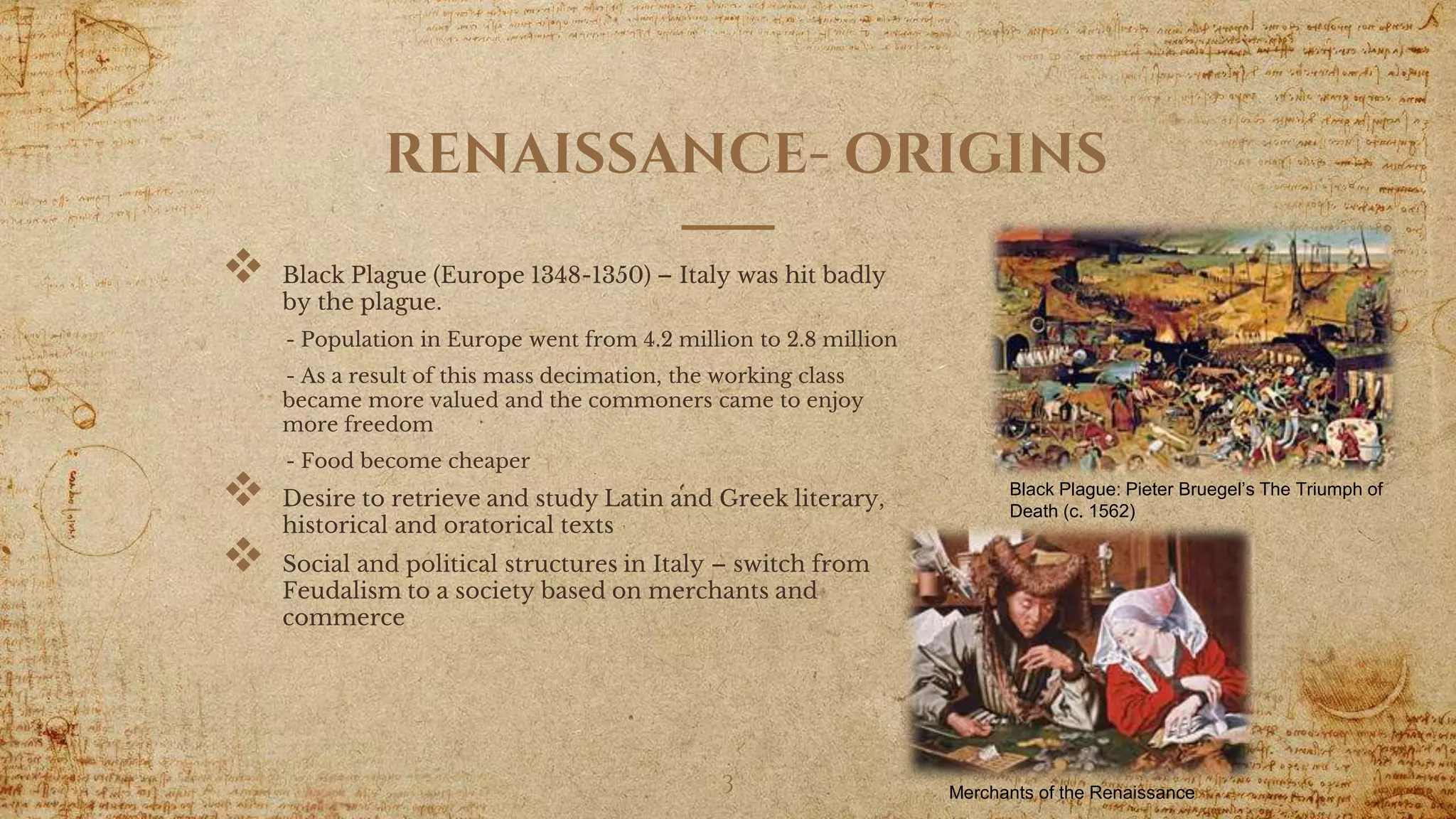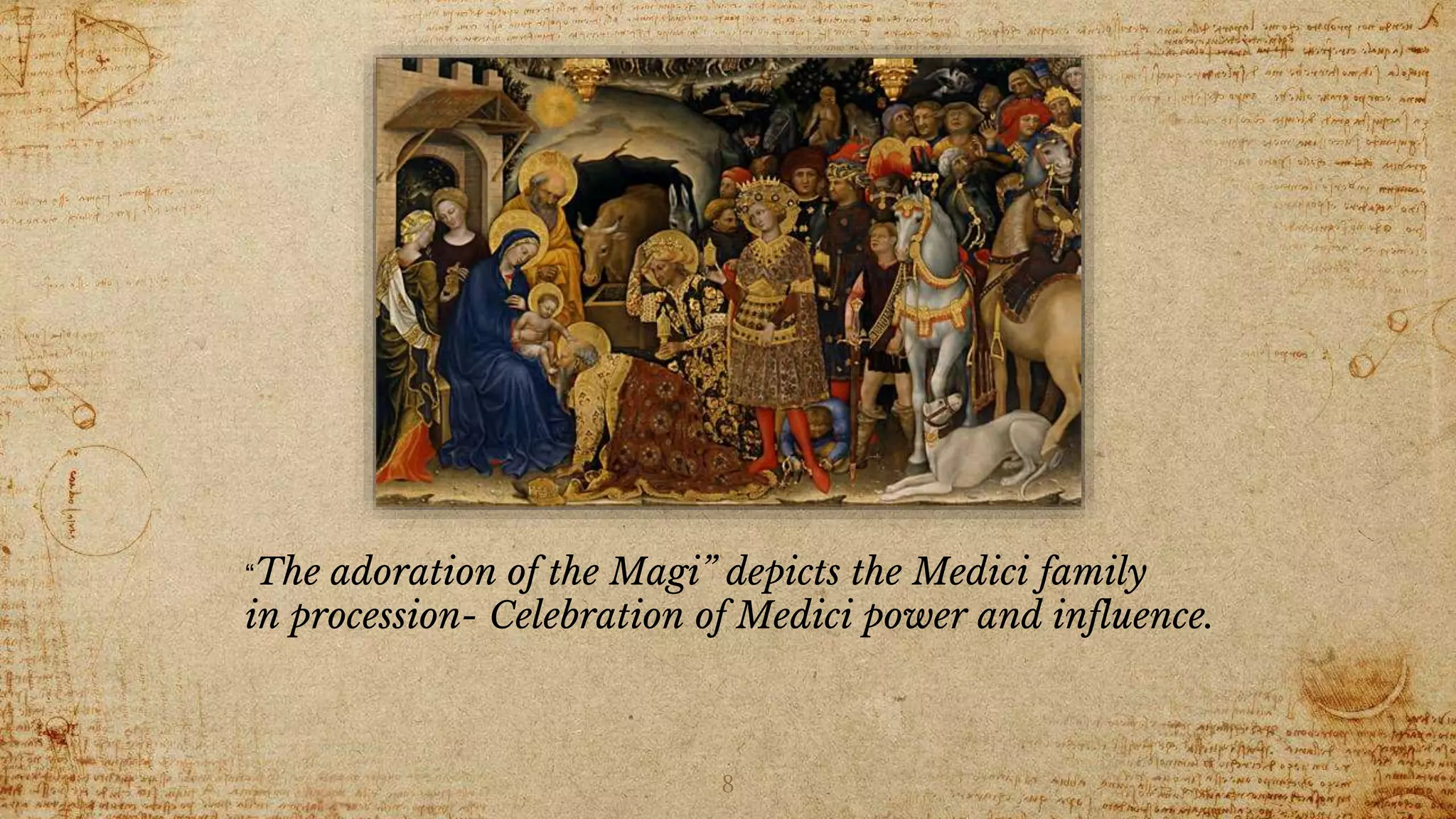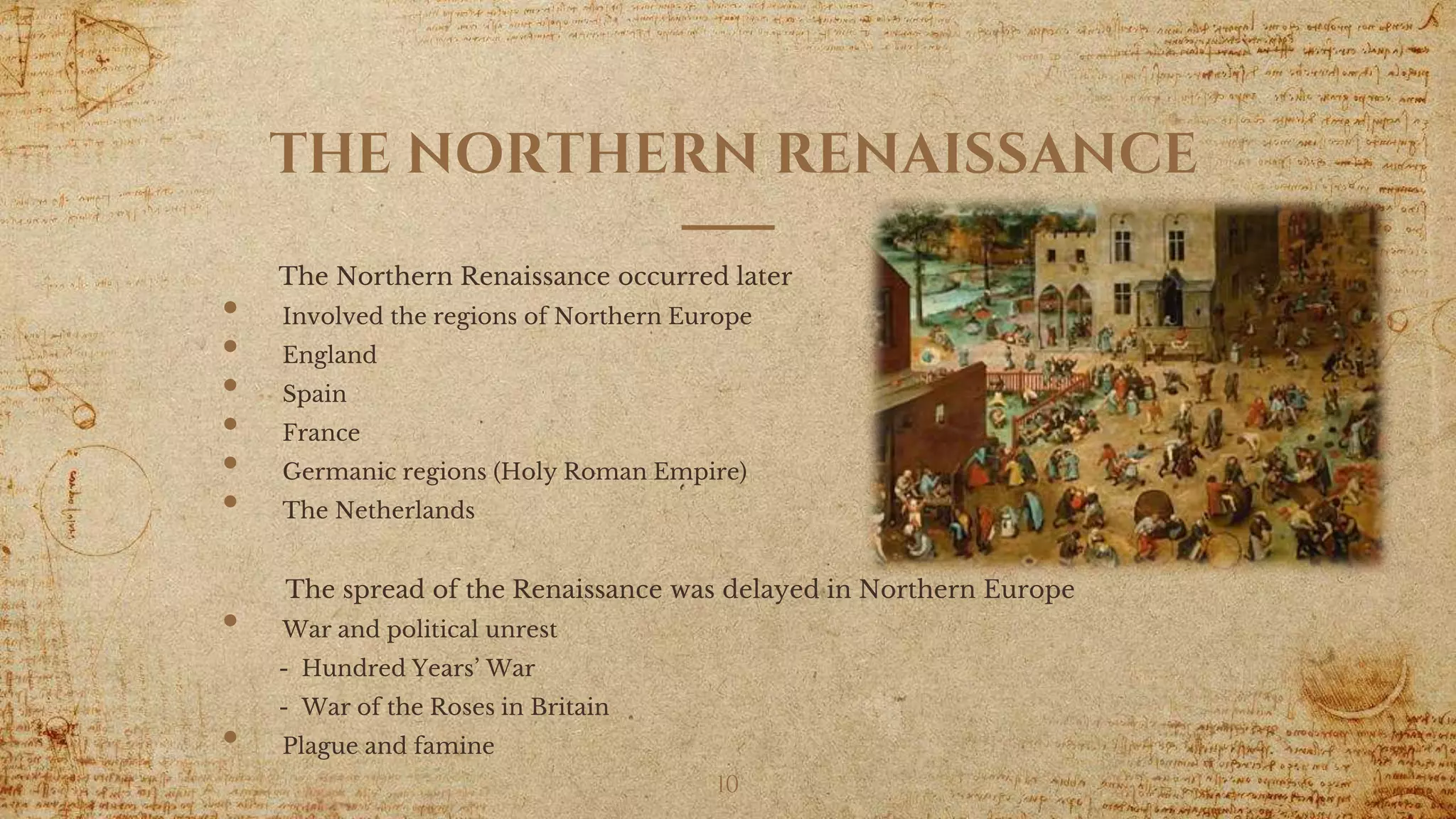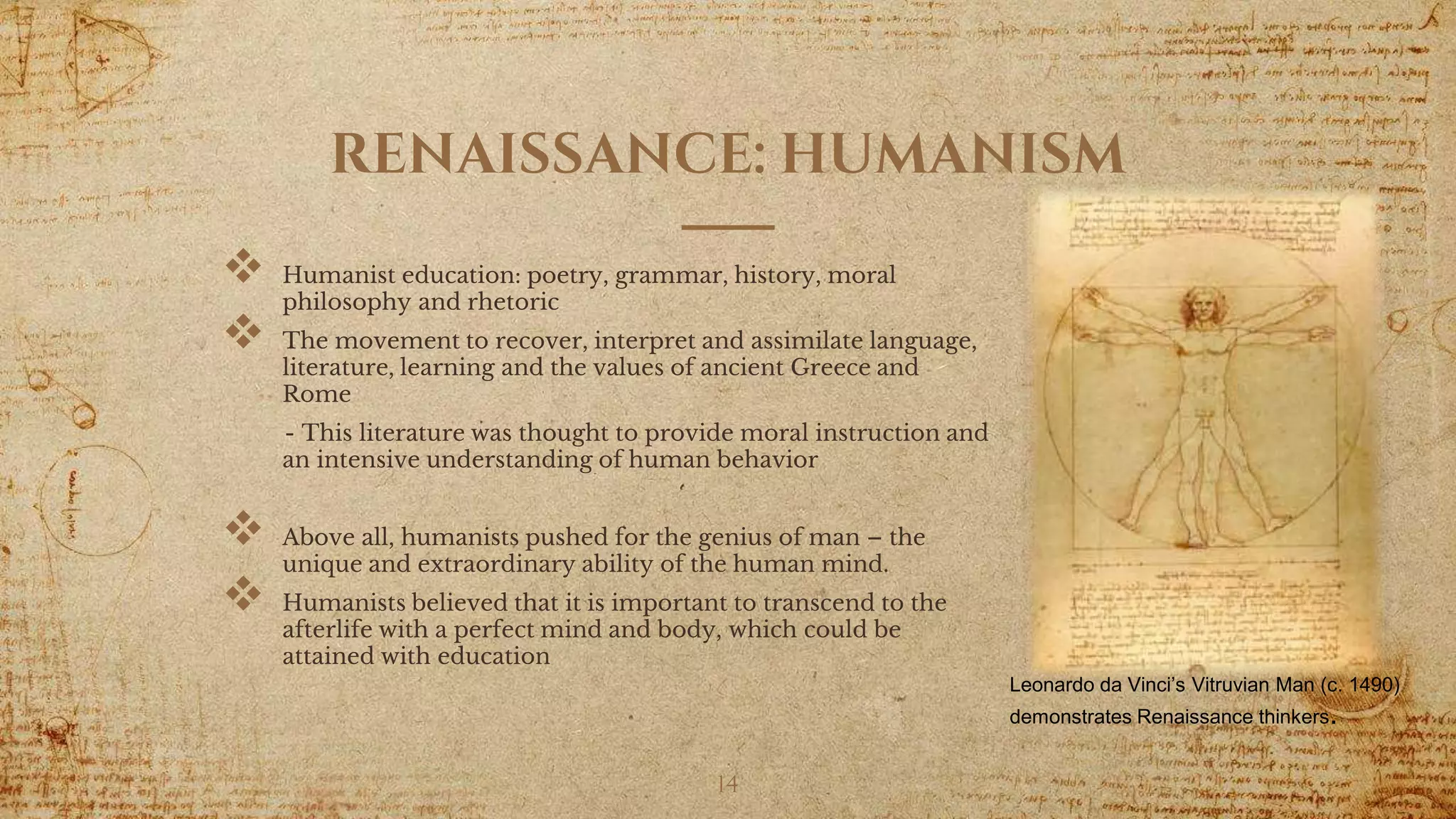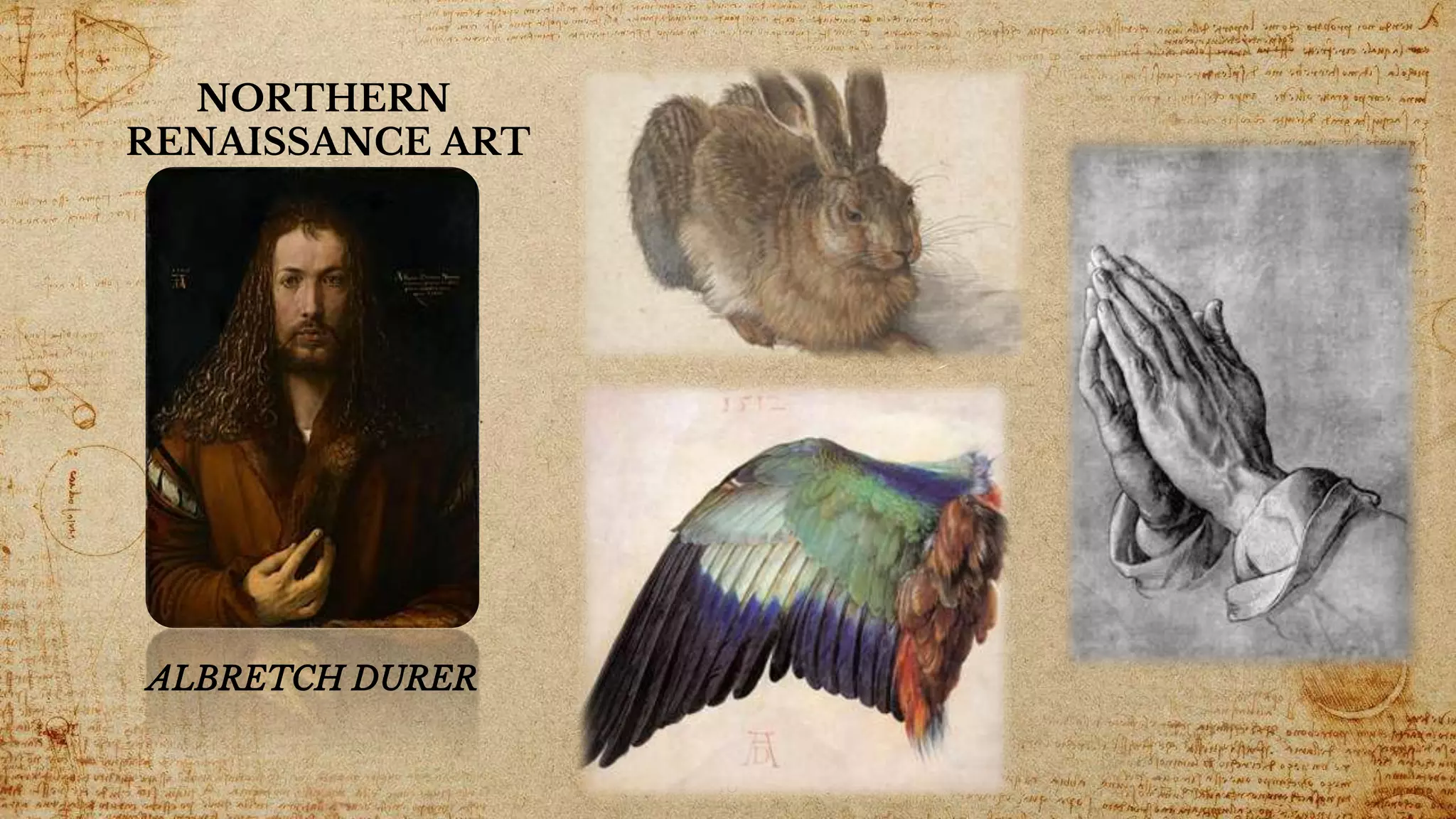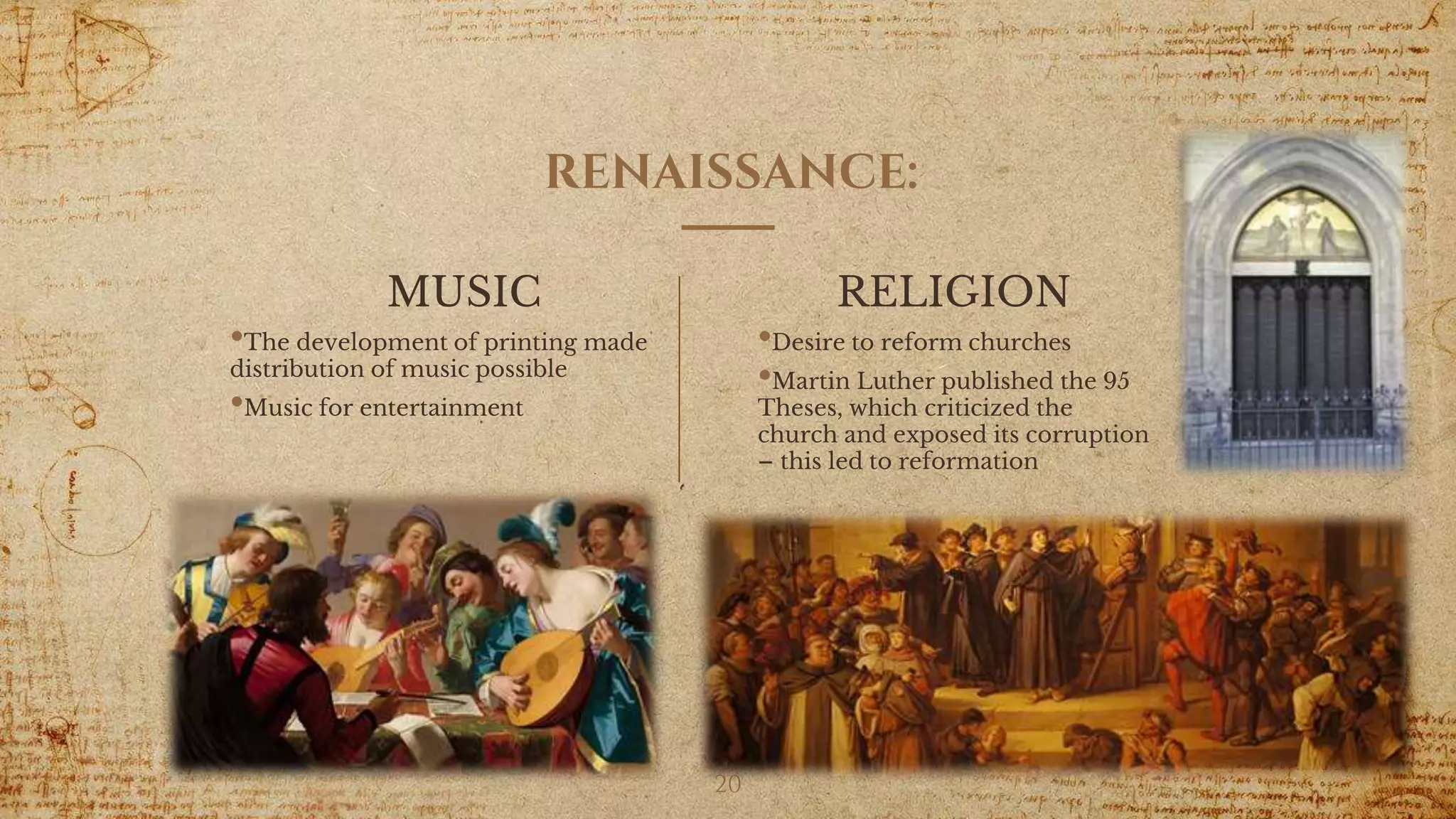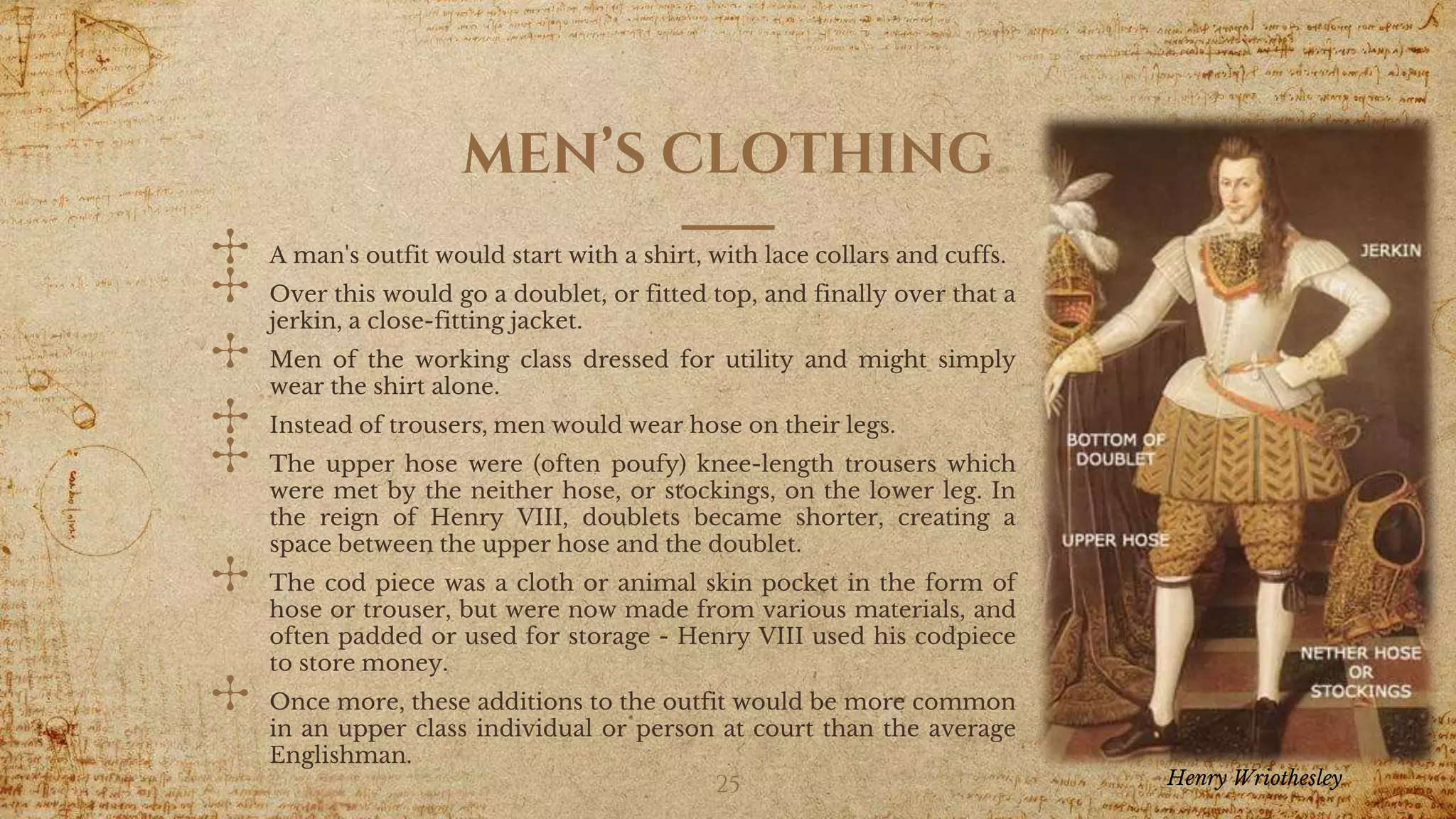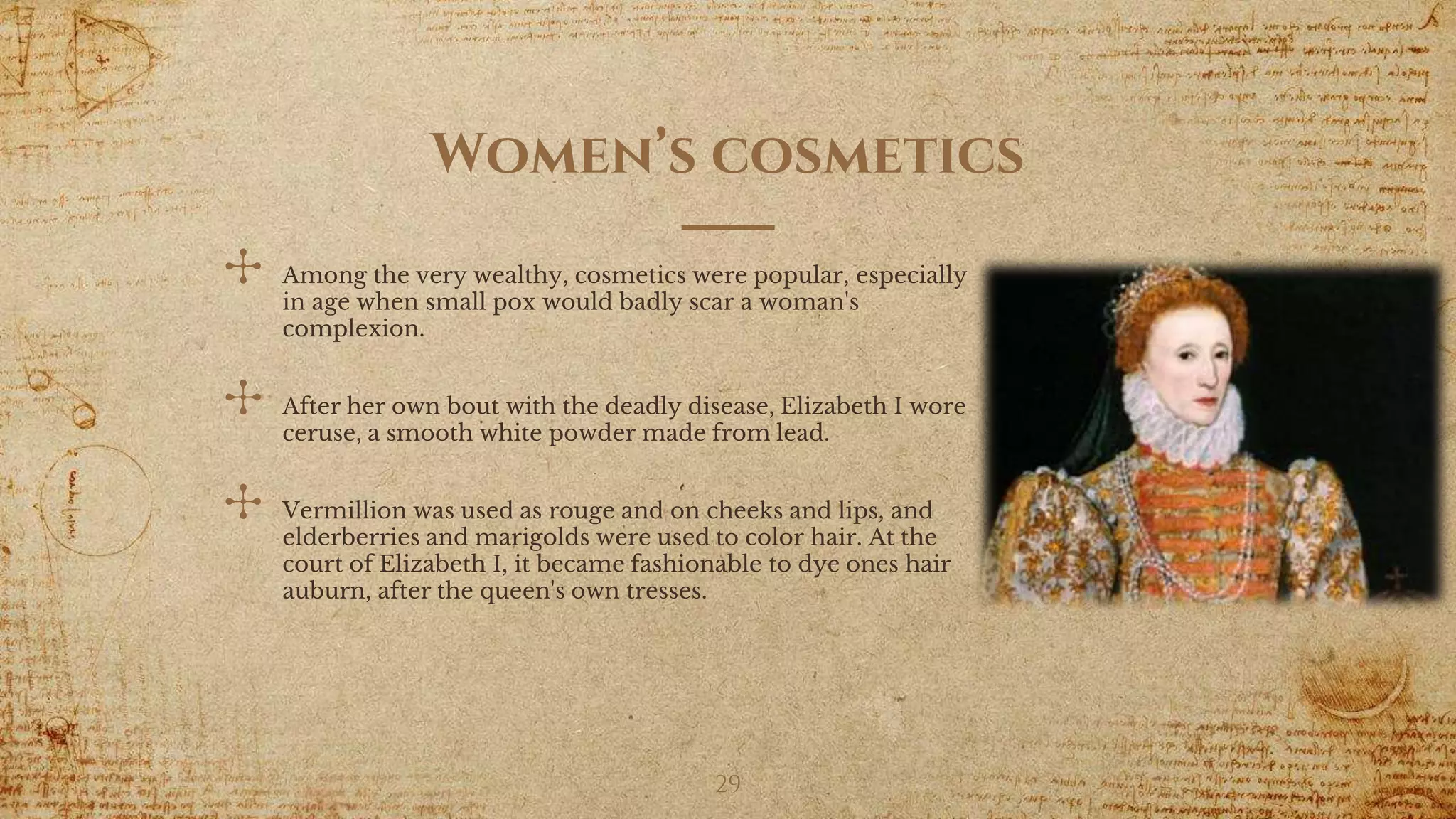The document provides an overview of the Renaissance period in Europe, beginning in Italy in the late Middle Ages and spreading north across the continent by the 16th century. It discusses key characteristics including the rebirth of classical Greek and Roman influences in various fields like art, literature, philosophy, and science. Specific highlights covered include the rise of humanism, important Italian city-states like Florence, the influential Medici family, and major figures such as Leonardo da Vinci, Michelangelo, and Machiavelli. The document also contrasts the earlier Italian Renaissance with the later Northern Renaissance and provides some examples of prominent individuals and developments in countries like England, Germany, and the Netherlands.

